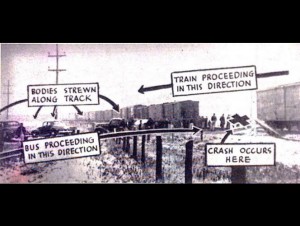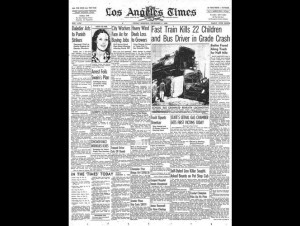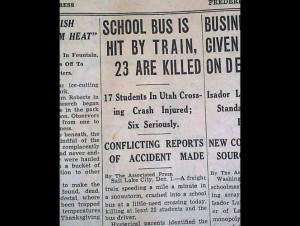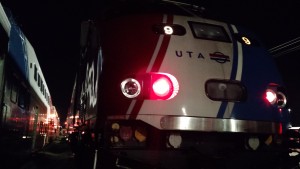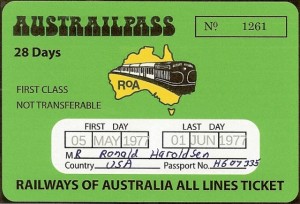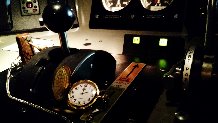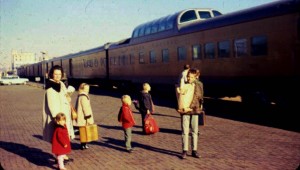Back when I started driving Frontrunner trains for UTA, family and friends would question what there was to do in the rail yard, and why I would have to work so late. Comments like “I didn’t think those trains ran that late?”, “FrontRunner doesn’t start that early!”, and my favorite, “What do you do all night, when the trains aren’t running?”
No! Even though the yard can be that quiet at times, this story isn’t about how we sit and play Checkers and Chess all night.
Checkers
They say that there are literally billions of possible moves in a single checkers game. I think it’s a fair comparison to the possible moves on any given work shift in the rail yard.
Even in our small rail yard, with only twenty-two tracks, and a shop with eleven tracks running into or through, the work that may be needed 24/7 is endless.
It’s certainly not an all inclusive, but here is a list of some typical yard work:
- Trains entering the yard as they end service. (Usually in the late mornings and at night.)
- Preparing trains to go into service on the mainline. (Usually in the early morning and afternoon.)
- Trains leaving the yard in the middle of the night. (To begin service at the north or south end of our line.)
- Moving trains into and out of the various servicing bays in the shop. (For cleaning, Inspections, refueling, etc.)
- Moving various railcars and locomotives as required for the maintenance personnel.
- Breaking up trains for (and building trains after) detailed preventative maintenance work.
- Staging trains in the yard for the next pullout (beginning of service).
- Testing trains, both on yard track and out on the mainline after certain repair work is completed.
- All the associated manual switch lining in the yard for everything listed above.
- On stand-by to go out in the mainline, with no previous notice, if a scheduled engineer is a no show, late, becomes sick while out on the mainline, etc.
- On stand-by with replacement trains to bring out onto the mainline to swap out trains experiencing mechanical problems.
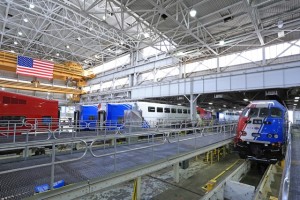
Like in checkers, some movements can only be made when doubled up. While some of this work can be completed by one engineer, other jobs requires at least two or sometimes three to follow all the safety protocols. Work directly in front of, behind, or under any part of a train requires some form of protection. For engineers, the mandated protection is to have another engineer guarding the controls with it locked into what we call “Set and centered”. When coupling or uncoupling a locomotive or railcars, the engineer needs to follow the directions of another engineer on the ground watching the move. Sometimes three engineers are required so both ends of the train can be watched while making the move. And always, any movement that is not forward, and with a clear view for the engineer, requires that another engineer is stationed to watch, and to “call the shove” movement.
Like in checkers, the various combinations of everything that might take place during a “report shift” in the yard can easily number in the billions. No two days are exactly alike.
The busiest “Overnight Report Shift” I’ve ever experienced occurred soon after I was licensed. My scheduled start time was 8:00pm. And in this case I was the only engineer scheduled for the yard that night.
Of course, like always, I was substantially early.
As soon as I arrived, I was asked if I wanted to start early because they needed me out on the mainline. I was immediately driven 20 miles south to meet a northbound train that was lacking a conductor. By the time the train reached our rail yard, they had a replacement for me and I was back in the yard.
Because I was the only one on report in the yard, I wanted to be ahead of the game on everything I could think to do, so I headed out to inspect and line the track for the “Pull in” which would start shortly after midnight.
I only made it halfway into the south yard when “Control” called me on the radio and told me to get the spare train ready for a northbound departure. This meant that a train on our north end was having mechanical difficulties and just in case they couldn’t resolve it, I needed to be ready to go out on the main line with a rescue train.
Getting the train ready included turning on power for each car, starting the locomotive, firing up the HEP (the train’s electrical generator), starting up the locomotive and building enough air in the system for operations, “Cutting Out” the Cab car (for Southbound movement) and “Cutting In” the Locomotive (for Northbound movement), and performing the required brake tests, which included a lot of walking back and forth to visually confirm that the brakes were doing what they should when brakes were applied and released.
By now Control informed me that they did in fact need my replacement train out on the mainline ASAP. I still had to manually line the yard switches for my northbound departure and go back into the operations room for my backpack (which has all my required paperwork to drive the train on the mainline).
It’s surprising how long all that takes to do when you have to do it by yourself.
Finally, I was back out on the mainline, this time driving the train. We made a “Train Swap” where the train crew and passengers continued north in the train I brought to them, and after all the needed brake tests, I “limped” that train back to the yard for repairs. In this case, the broken train could not proceed northbound, but by cutting out the locomotive and cutting in the cab car, I could still drive it southbound.
On my return, finally I was able to walk the rail yard and line the switches to start the pull in. And that’s when the fun began. For the rest of the night I moved as quickly as possible, from one thing to the next. Always there were at least three for four things patiently (and sometimes impatiently) waiting for me to get to them. To condense my story, a sampling of my activities that night are reduced to this bullet list:
- Direct incoming trains where to go as they enter the yard.
- Line the track for the next train as each one enters it’s designated track.
- Help tie down each train when it comes to a stop.
- Line track for each train to move out of the servicing bay and to it’s parking place.
- Test the repaired “Broken train” from earlier with movement through the rail yard.
- Move each train out of the shop and to their parking place as maintenance releases them.
- Continually reline track as each train moves back and forth to reach it’s correct parking position.
- After moving each train out of the shop, drive the next one waiting behind it into the shop so maintenance can service, clean, and inspect.
- Each time I have a train to move, specific protocols must be followed including walking the entire consist and releasing several hand brakes.
- Of course all of this is done in the dark of night and on hard to walk on “ballast” rocks that the railroad tracks sit on.
Like in my best attempt at playing checkers, I was always thinking as many moves ahead as possible. After tying down this train, here in the east yard, do I have time to walk back and line the track of the east and north yards for the next train out of the shop? Or should I cut straight across to the south yard to line it for the next inbound train and then move the next train in cue to the waiting servicing crew? Sometimes a little delay now will save a lot of time later.
Even for someone who’s not afraid to walk a lot, and in fact in the habit of running about 10 miles in my off duty time, this was a very busy night of work. By 6:00am, the end of my shift, I was dead tired.
